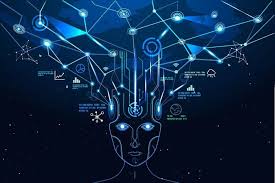artificial intelligence (umela inteligence) (AI) is transforming how we live, work, and engage with technologies. From virtual assistants to self-driving vehicles, AI is becoming increasingly integrated into our everyday lives. What exactly is AI, what makes it crucial? This article will provide a brief overview of the basics of artificial intelligence to aid you in understanding its fundamental concepts and implications.
What is AI?
In essence, AI refers to the artificial intelligence that simulates human intelligence in machines that are designed to learn and think like humans. It can include a variety of capabilities, including patterns, problem-solving, and decision-making. AI Systems can be divided into two broad categories that are general AI and narrow AI and general AI.
Narrow AI: Also referred to as weak AI, this type of system is created to complete a particular task or resolve a specific issue. For instance, voice assistants like Siri and Alexa and recommendation algorithms utilized in streaming platforms, as well as image recognition software. Narrow AI is common and highly specialized, but it lacks the capacity to expand knowledge beyond its designed functions.
General AI: Also referred to powerful AI as well as AGI (Artificial General Intelligence) The goal of this type is to mimic human cognitive capabilities comprehensively. General AI would be competent at understanding learning, and applying its intelligence to various tasks and contexts. At present, AGI remains largely theoretical and has not yet been realized.
How Does AI Work?
AI systems work by using the use of algorithms as well as data. An algorithm is an arrangement that contains rules, or guidelines that are given to computers to aid it in learning on its own. Machine learning (ML) is a subset of AI is the process of training these algorithms using large data sets to recognize trends and predict future events. There are a variety of types of machine learning, which include supervised as well as unsupervised learning and reinforcement learning.
Supervised Learning The algorithm is trained using labeled data, in which each input as well as output is identified. As an example, a machine might learn to recognize cats in photos by being trained on a dataset of cat images with labels that identify them as such.
Unsupervised Learning: The algorithm is given unlabeled information and is required to discover patterns and relationships within the data by itself. This method is commonly employed for clustering and other task-related tasks.
Rewarding Learning: A computer program is taught through interaction with its environment and receiving rewards or penalties depending on the actions it takes. This approach is often employed in game play and robotics.
Ethical Considerations and Future Trends
As AI continues to advance, ethical considerations become increasingly crucial. Concerns like data privacy algorithms, bias in algorithmic computation, and the possibility of job displacement need to be taken care of. The future of AI promises further innovations, with advancements in areas such as natural language processing, robotics or autonomous system.
Knowing the fundamentals of AI will help in navigating its impact on the world. As technology develops, being updated on the capabilities of AI and its the challenges it faces will be vital to making educated decisions and encouraging responsible growth.
